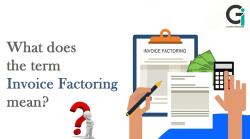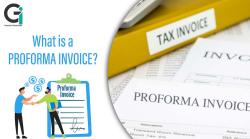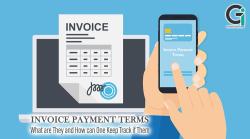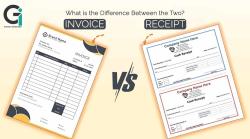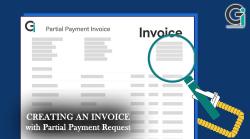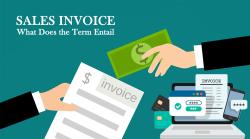Ultimate Guide to a Commercial Invoice

If you are running a business that ships goods and products to another country then you need to create commercial invoices. These commercial invoices are important documents that are a must-have for shipping. A commercial invoice contains all the key details that customs officials will check before they allow goods and products to pass out of one country and enter into another. In other words, a commercial invoice is like a golden ticket for exports as without it your products will not be allowed to leave the country.
However, if you draft an accurate commercial invoice, it will be your ticket to sending your products to buyers anywhere in the globe, and in return help you grow your business to new heights. in this article, we will discuss in depth what a commercial invoice is. so read till the end if you are considering doing business with international customers in the future.
Difference Between a Commercial Invoice and An Invoice
An invoice is a document that is issued to a customer, requesting the payment of goods or services offered. On the other hand, a commercial invoice does much more than just issuing a formal payment request. It covers the following basics of a standard invoice:
- Information of the seller and the buyer
- Invoice number
- The due date of payment
- Cost of the products or services purchased
Apart from this information, a commercial invoice also harbors details related to international trade like the origin country and the Harmonized System code or HS code. A basic invoice is more like a bill, while a commercial invoice, apart from acting like a bill also serves the purpose of an export document that allows for seamless shipment of goods internationally without subjecting the buyer or the seller to any legal issues.
Issuance of a Commercial Invoice
A commercial invoice is issued when you want to deliver products to another country. The seller or the exporter has to draft about three copies of a commercial invoice. One copy is meant for the country the seller is exporting from, the second copy is drafted for the receiving country, and the third copy is meant for the buyer.
If you are shipping products within your country, then there is no need to draft a commercial invoice. Moreover, if you are a seller based in the United States you don’t have to issue a commercial invoice for shipping products to the EU countries as well. However, if you are sending goods from the States to Algeria or China, you need to generate a commercial invoice. A commercial invoice is used by the customs officials to:
- Determine what tariffs need payment
- Clear trade so that the goods can be shipped
- Verify the sale
When you draft a clear commercial invoice, that harbors all the correct details, your products will be shipped right away and will reach your customer on time. however, if your invoice is not properly drafted it can lead to shipping delays.
Elements of a Commercial Invoice
A commercial invoice must include the following elements:
Information of the Buyer and Seller – First of all, when drafting a commercial, include all the information about your business, the exporter, and the customer, the importer. Mention the details like:
- Name of the business and customer
- Address, of the business and the customer including city, country, postal code, and street address.
- Tax IDs, if you are selling products to another company.
Details of the Transaction – Every invoice is labeled by an invoice number that is always the next number sequentially after the last I vice you drafted. Like, if the first invoice you drafted was number 001 then the next one will bear the digit, 002. This number is an identification mark on the invoice. It helps both the business and the buyer track the amount of transactions for accounting purposes and for tax. You will also have to include transaction details as the customs authorities will use this information to determine the taxes and the duties owned. Therefore, when drafting a commercial invoice, make sure to be precise and accurate. Given below is the information that you will need to include:
- Order number or purchase number
- Total amount of sale
- Currency of payment
- Due date of payment
- Payment terms
Payment Terms and Incoterms – On a commercial invoice a key differentiator is the terms of sale. These terms are what help a seller negotiate things with buyers. The details of which party will pay for what and negotiating payment terms can make or break the cash flow of your business. When it comes to international trade, these terms and details are known as Incoterms. These Incoterms define:
- Which one of the two parties pays for insurance, shipping, and customs fees
- Which party arranged transport
- Which party is liable for goods
Export Control Classification Number or ECCN - In case you are shipping electronics or aerospace equipment internationally you will need a license along with an ECCN code. There are certain categories of products that fall on the Commerce Control List. For such products, you will need a license before you are allowed to ship them out of the United States. On your commercial invoice, you will need to enter the correct ECCN code. To figure out if you need an ECCN code or not, you will have to visit the U.S. Department of Commerce page. Those products that do not fall under the category of Commerce Control List are deemed as EAR99.
Harmonized System Code - The Harmonized System or HS code helps identify the type of commodity. The HS code is a six-digit code that is used by customs authorities to access duties, and also for gathering data on exports and imports.
Product Information – Even though the HS code acts as a universal identifier, you will still need to include a more detailed description of the goods or products that you are shipping in your invoice. The following details need to be included in your commercial invoice:
- Product name, along with description
- Item code
- Net and gross weights
- Price of unit the total price of each product type
- Subtotal
What Happens When You Don’t Fill Out an Accurate Commercial Invoice
Issues on a standard invoice can turn into a headache, it’s a whole other story when you encounter issues on a commercial invoice, especially if you are a busy owner of a small business. In case you fail to draft your commercial invoice correctly, you will be subjected to the following situations:
- Penalties or fines
- Delay in the shipment of products
- Seizure of products by customs officials
Four Best Tips for Generating an Accurate Commercial Invoice
If you to invoice like a pro, use the following four tips:
- Keep all the data like, client data, HS codes, and other important information on a single system so that you can access them easily.
- Make sure to customize your commercial invoice according to t your needs. Start the invoicing process by opting for a good template and then tailor it according to your requirements.
- Before sending the commercial invoice, send a pro forma invoice first. A pro forma invoice is similar to a quote and helps ensure that you and your client are on the same page when it comes to product quantity and price.
- Use an innovative invoice generator like Invoice-generate.com.




